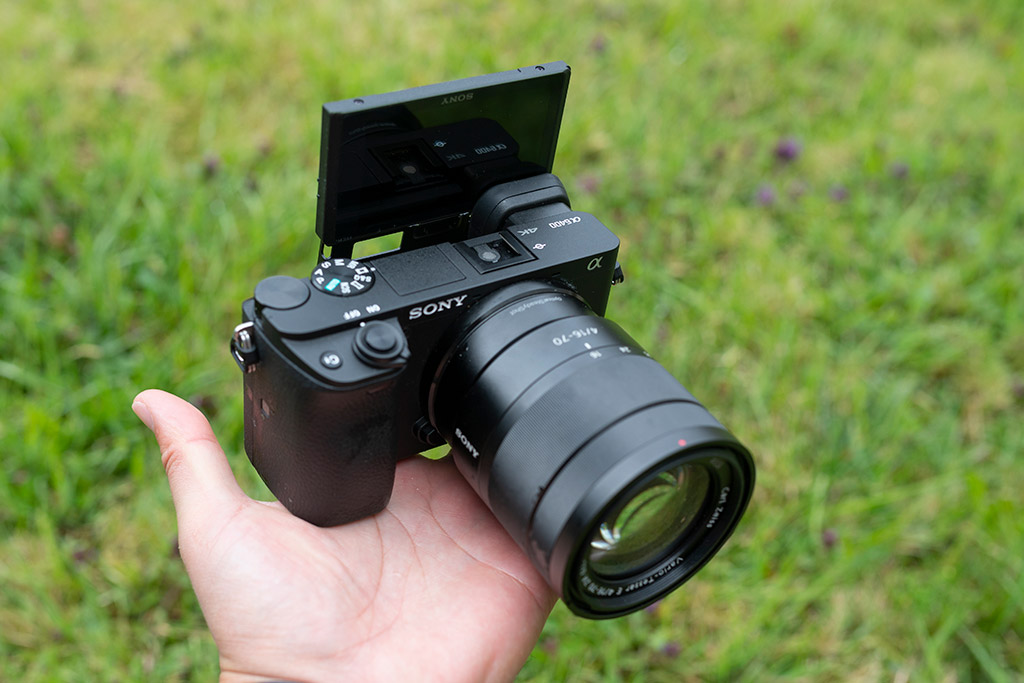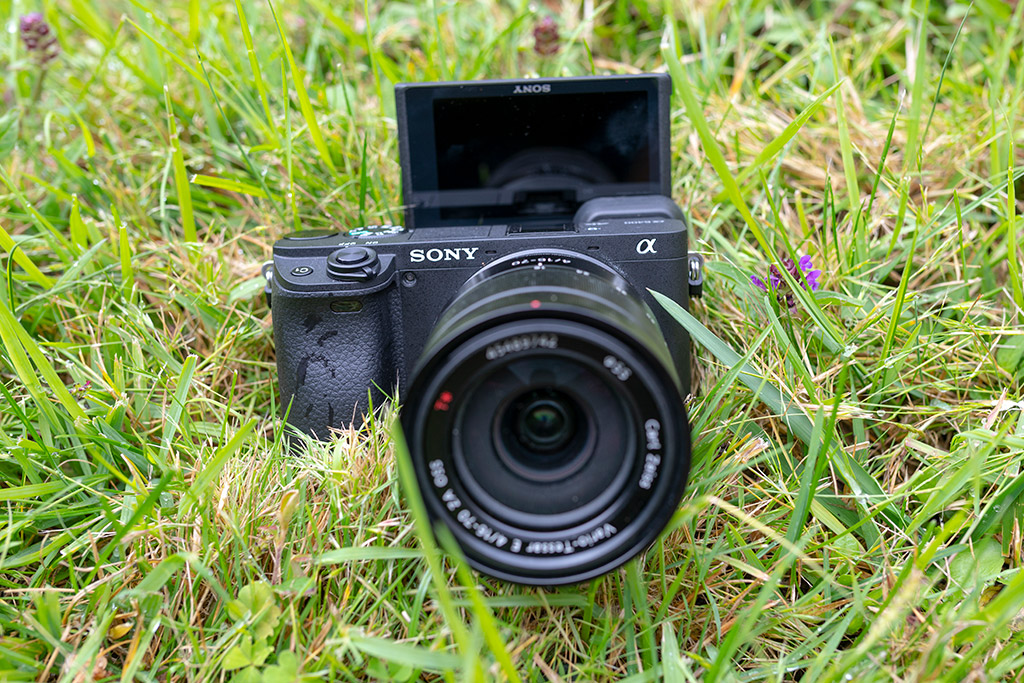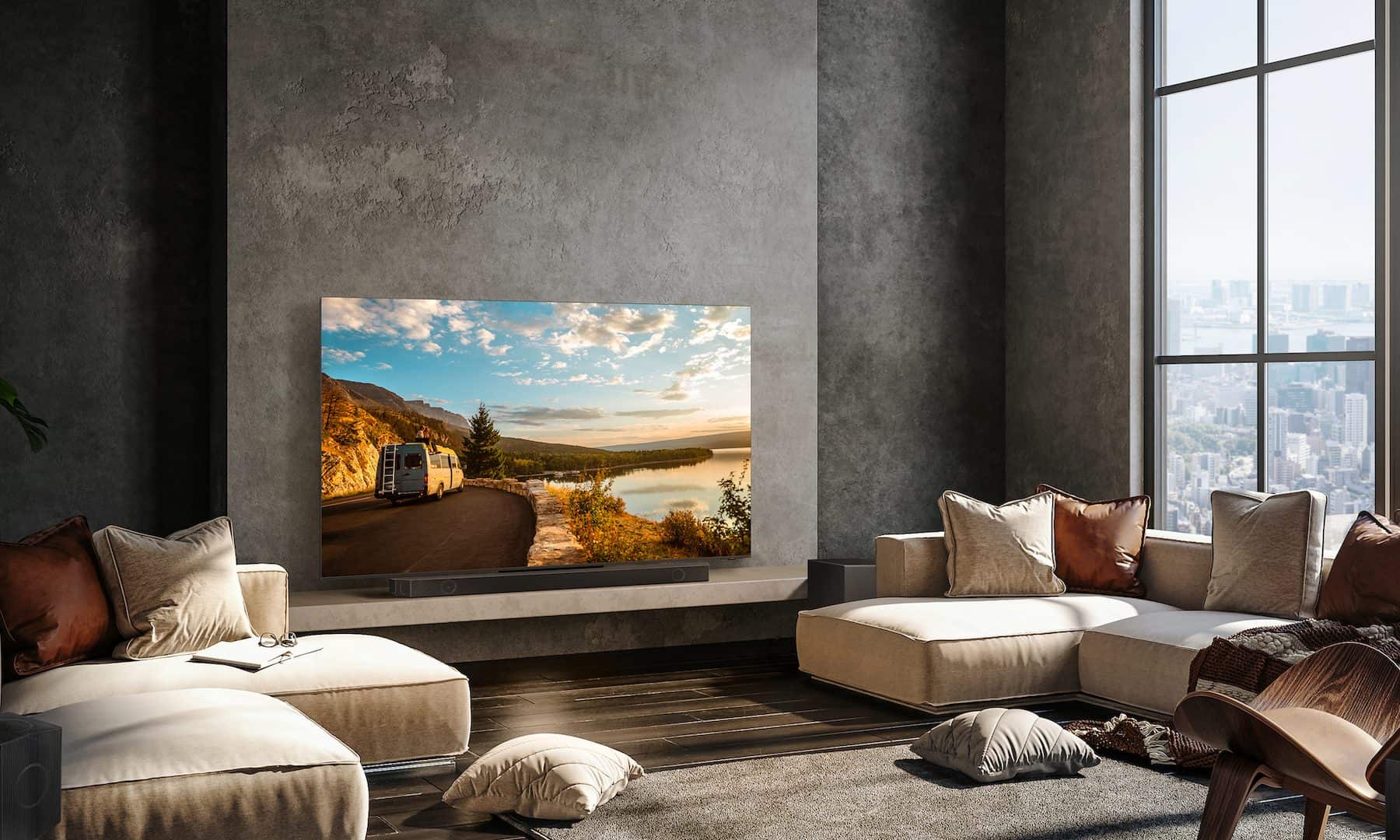SONY
It's been close to three years since Sony launched its award-winning A6300 mirrorless camera, itself a followup to the A6000 and, even earlier, the NEX-6. All three models proved to be very popular, which certainly goes well for the latest entry in the lineup, the Sony A6400.
Featuring almost the same body as in the previous couple of generations, the A6400 will be immediately familiar to anyone who's shot with the A6000 or A6300. So, too, it's 24.2-megapixel resolution from an APS-C image sensor, and its top burst capture rate of a swift 11 frames per second with autofocus tracking.
So what's new in the A6400? There are improvements to be found in a few key areas, most of them related to either autofocus or ease-of-use.

Firstly, Sony has improved the tilting articulation mechanism which allows the LCD monitor to be raised to a much greater range, sufficient not just for shooting from the hip or over your head, but also for self or vlogging. (In the A6300, the screen could flip upwards 90 degrees, or downwards by 45 degrees.) It can now flip upwards to full 180 degrees to allow viewing from the front of the camera, or downwards by around 74 degrees.)
The LCD monitor has also been gifted to a new touch-screen overlay, allowing it to serve double duty as an input device. Sony takes good advantage of this new feature with Touch Pad, Touch Focus, Touch Shutter and Touch Tracking functionality, the latter being a new addition to the roster which allows for real-time tracking of the user-selected subject as it moves around the image frame.
The Sony A6400, though, promises even better autofocus performance than its predecessors in several ways. Firstly, Sony says it has updated its autofocus tracking algorithms for what it's calling "real-time tracking". Courtesy of artificial intelligence techniques that help to recognize subjects based on distance, color and brightness, Sony is promising to noticeable improvement in its tracking capability.
Automatic Eye AF in all autofocus modes
And not just that, it's also given the Eye AF technology which we've praised in past reviews an important promotion. Previously accessed an option through the menu system, it's now available in all autofocus modes. Yes, you read that right: If your chosen subject has a human face, the A6400 will automatically focus on your subject's eyes.
Those are the headline changes for autofocus, but there are a few other miscellaneous tweaks made, too. For example, the A6300 used to have a lower focus point count (169 points) for contrast-detection AF than for phase-detection (425 points). But the A6400 instead has the same count of 425 AF points regardless of which of the two AF detection mechanisms are in use. (Incidentally, the autofocus points cover some 84% of the overall image frame.)
The AF system also works even better in low light, with a working range of EV -2 to 20, expanded from the earlier EV -1 to 20 range. (That's likely to be improved sensitivity for the main sensor image, on which contrast-detection AF can be performed, but we'll get back to imaging pipeline changes in a moment.)
Other notable changes in the focusing department include smoother and more accurate autofocus for video capture (another topic we'll be returning to shortly), and a new blue color option for focus peaking. The A-EA3 A-mount adapter attached, the A6400 will now only use phase-detection AF instead of the full hybrid system.

Sony Ericsson A9 (whose processor also carries BIONZ X branding), company reps could not comment beyond telling us that the A6400 had borrowed "systems" from the A9.
A modest improvement in sensitivity / noise levels, and a much bigger buffer
The new processor and updated algorithms within allow modest increase in the upper sensitivity limit, which was ISO 25,600 by default in the A6300, but now roams as high as ISO 32,000 by default in the A6400. With expanded sensitivity enabled, we see an increase from the A6300's ISO 51,200 upper limit to a maximum of ISO 102,400 in the A6400. At the bottom end of the range, the lower limit of ISO 100 (regardless of ISO expansion) is unchanged.
The updated internals also bring with them a significant increase in buffer capacity, with the Sony A6400 now able to capture roughly twice as many frames in a burst as its predecessor. Per Sony's figures - we have yet to perform our own in-house testing on this new model as of press time - you can now expect to capture around 99 Extra Fine JPEGs, 46 raw files or 44 raw + JPEG pairs in a burst.
Of course, with no major improvement in card speed simultaneously, since the A6400 remains UHS-I only, you can expect a longer wait for the buffer to clear, as well.
Some new options for still-imaging creatives
Sony has taken the A6400 as an opportunity to tweak its creative options in a few areas. Firstly, there are two new metering mode options: total-screen average or highlight metering. You can also now adjust the spot metering area to either standard or large sizes. And at the same time, Sony has also added a new 1: 1 aspect ratio to the A6400.
Lots of love for video shooters, too
Sony was clearly thinking of videographers in launching the A6400, as well. The new camera has been very worthwhile upgrades over its predecessor in this area. It can still record 4K video at 3,840 x 2,160 pixel resolution with full-pixel readout and no pixel binning, just as did the A6300. However, you now get goodies like support for HD proxy recording, so the camera can simultaneously save a low-bitrate and relatively low-res version of your footage for use in editing. Then, once your edits are complete, you can swap in high-quality, full-res footage instead.
There is also a new Slow & Quick Motion mode in place of the earlier high frame-rate mode. This still allows up to a 5x slow-motion effect, but now adds up to a 60x quick-motion effect to the feature list, as well. And in addition, you can now shoot with hybrid gamma log, S-Log2 or S-Log3 picture profiles, catering to HDR and color grading needs.
One subtraction is that the MP4 file format is gone, with only XAVC S and AVCHD options on offer in the A6400.
Sony was clearly thinking of videographers in launching the A6400, as well. The new camera has been very worthwhile upgrades over its predecessor in this area. It can still record 4K video at 3,840 x 2,160 pixel resolution with full-pixel readout and no pixel binning, just as did the A6300. However, you now get goodies like support for HD proxy recording, so the camera can simultaneously save a low-bitrate and relatively low-res version of your footage for use in editing. Then, once your edits are complete, you can swap in high-quality, full-res footage instead.
There is also a new Slow & Quick Motion mode in place of the earlier high frame-rate mode. This still allows up to a 5x slow-motion effect, but now adds up to a 60x quick-motion effect to the feature list, as well. And in addition, you can now shoot with hybrid gamma log, S-Log2 or S-Log3 picture profiles, catering to HDR and color grading needs.
One subtraction is that the MP4 file format is gone, with only XAVC S and AVCHD options on offer in the A6400.
No more PlayMemories Camera Apps; intervalometer goes standalone
Another more significant subtraction is the PlayMemories Camera Apps with which we've long had a love-hate relationship in past models. In some respects, they were a nice idea, allowing your camera functionality to be extended somewhat to meet your evolving needs post-purchase. However, in other respects they could be infuriating, especially in their use of a siloed menu system which duplicated - and yet totally ignored - identical options available in other camera modes.
All of which is to say that we will not really miss the PlayMemories Camera Apps, even if in some respects they were a nice idea. The most commonly-requested of the bunch, the intervalometer function, has now been built into the A6400, rather than remaining a standalone, payware app. A Bluetooth radio to supplement the existing Wi-Fi and NFC
The Sony A6400 retains the built-in Wi-Fi and NFC radios of its predecessor, the former of which was used for high-speed data transfer, and the latter for quick-and-easy pairing and bump-transfers with Android phones. And alongside them, there's now a Bluetooth 4.1 radio for a low-power, low-bandwidth data connection which can be left in the background, so the camera and phone can communicate as needed, then raise the Wi-Fi connection automatically for large data transfers.
The Bluetooth connection can also be used to sync data from your smartphone.
In other respects, the A6400 will prove familiar to owners of its predecessors
And that's very close to it for the changes. Sony does spec a very slightly higher battery life of 360 frames on the electronic viewfinder, or 410 frames on the LCD monitor, both figures being increased by 10 frames from the A6300. The camera body is also a millimeter or so deeper, and about a gram lighter than before. Sony has also upped the EXIF revision to version 2.31, and now includes its AC-UUD12 USB charger in the product bundle, where previously it just supplied USB cable and expected users to supply their own chargers.
The Sony A6400 will ship in February 2019 for a suggested retail price of $ 900. It will also be offered as a kit with the 16-50mm f / 3.5-5.6 OSS lens for a suggested price of $ 1,000, or in a kit with the 18-135mm f / 3.5-5.6 OSS lens for a suggested price of $ 1,300. by Mike Tomkins

No comments:
Post a Comment